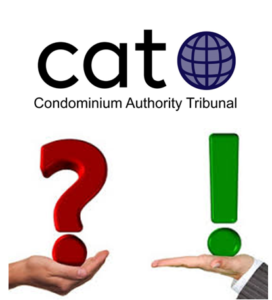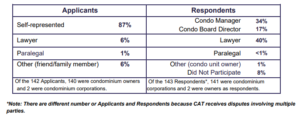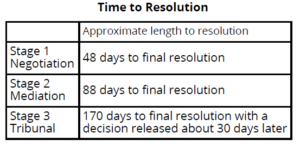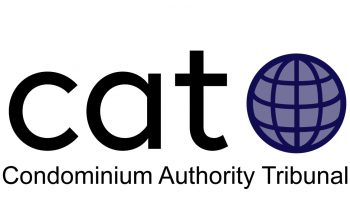 August 2022
August 2022
As the Condominium Authority of Ontario (CAO) moves into its fifth year of operation, this is a good time to look more closely at the effectiveness of its Condominium Authority Tribunal (CAT).
Condominium Authority of Ontario
The Condominium Authority of Ontario is, according to its website, a “legislative authority created to improve condominium living in Ontario”. Its mandate includes registration of all condominium corporations in Ontario and self-help resources. They oversee mandated online training for condo directors and manage the forms required to request or communicate information in condominium communities.
Funded solely by fees paid by all condo owners that supports a staff of approximately 50 people, CAO administers the Condominium Authority Tribunal, described as “Canada’s first online tribunal, dedicated to helping owners and condominium corporations resolve condominium-related disputes conveniently, quickly, and affordably.” CAO collects more than $8 million annually to fund its operations. Of this, 2021 fiscal year expenses for the tribunal are $239,002.
Condominium Authority Tribunal
The Condominium Authority Tribunal is one of multiple bodies dealing with residential matters.
Another such body, the Landlord and Tenant Board (LTB), has recently received exposure and ridicule for its practices. They shut down for five months during the pandemic. Tenants, landlords and paralegals are frustrated with their ineptitude and dysfunction. Landlords and tenants suffer daily because of delays, cost, dysfunction and miscarriages of justice. In the two years prior to covid, the LTB received approximately 80,000 applications per year – more than 1,500 per week. Landlords seeking to end a tenancy or collect money owed accounted for 90 percent of applications. That number dropped to about 48,000 applications because of the five-month closure. Since reopening, they have been unable to reduce the backlog. The remaining 10 percent of applications, filed by tenants, get heard within weeks.
In British Columbia, the Civil Resolution Tribunal (CRT) is an online tribunal that handles between 120 and 140 complaints weekly – over 5,000 submissions annually. Their Annual Report informs of volume of cases heard and how they were resolved.
CAT manages a much smaller caseload. The most current information from the Condominium Authority Tribunal (2020/2021) is that they handle fewer than three cases per week – up from 26 cases accepted and four resolved in their first five months of operation, between one and two cases each week, in 2017/2018.
Tribunal Submissions
CAT operates in three stages. Stage 1 is negotiation. Stage 2 is mediation. Stage 3 is a tribunal decision. Fees paid by users of the Condominium Authority Tribunal do not exceed $200 per case.
Condominium owners can choose to represent themselves or can elect to have a representative. Condominium corporations must select a representative such as a board director, condominium manager, lawyer or paralegal.


CAT applications can expect to spend a total average of 170 days in the CAT system inclusive of all three stages, plus an additional 20 days until a decision is released. Since some cases are resolved in Stages 1 and 2, the average expected duration of a CAT case is approximately 121 days.
Condominium Authority of Ontario states that “approximately two thirds of all cases submitted to the CAT are resolved through negotiation or mediation in Stages 1 and 2.” In 2020-21, 66 percent of the cases closed without requiring adjudication. This means there was some agreement between parties without requiring the tribunal to force a decision.
A Word about Data
It has become common practice for technology companies to create ways suggesting growth or success in the absence of solid data. A business without sales or customers will point to pageviews or site visits to promote the perception of growth or success. It appears Condominium Authority of Ontario has embraced this philosophy. Toronto Condo News requested data from CAO. The CAO reports pageviews and site visitations when solid data is readily available to them. We can only presume that the absence of solid data is because there has been no improvement.
Tables included with this article, from the CAO Annual Report, are of limited value without access to the number of applications received and how they were resolved. A Freedom of Information request has been filed in an effort to obtain further details.
In Conclusion
While the need for an effective Condominium Authority Tribunal is undisputed, it is a travesty and shameful about the lack of transparency in comparison to similar operations. In the absence of this data, we consider it reasonable to assume the volume of cases handled by CAT remains embarrassingly low and in need of explanation by CAO. So long as a veil of secrecy is maintained by the CAO, we can never know just how good or poor a job they are doing.




